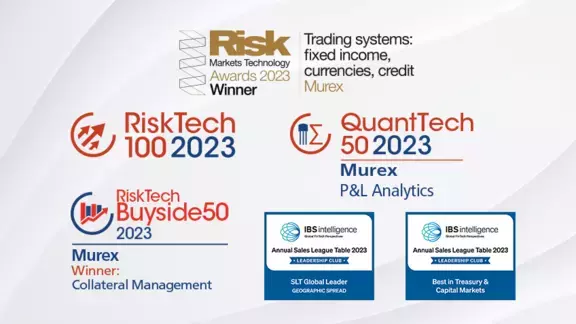-
Our solutions
- Our clients

With 300 clients and 60,000 users spread across 60 countries around the world, Murex has a truly international client base of capital markets participants.
view all case studies- Insights
- Who we are

Our awards highlight a strong level of customer satisfaction and acknowledge our market expertise.
Visit our awards webpage- Our partners
- Careers
Why the time is right to embrace Agile
A perspective from Arnaud de Chavagnac - Head of cloud, technology and services marketing at Murex
Paris, France, 19 May 2020
When the COVID-19 pandemic hit nearly two months ago now, we like the rest of the world were thrust into remote working and a scenario of unknowns and wait and sees. We reacted quickly, adapted and put measures in place to ensure business continuity for our staff, our clients and our partners. For our 1000-person strong customer division, who are responsible for leading major IT implementation projects, and for servicing our 50,000 daily users in 60 markets, there was almost no change in our working practices. Thanks to the deep relationships with our clients, we continue to deliver projects remotely and provide the same if not better quality and attention.
Much of this smooth transition happened because we have long championed the Agility and DevOps approach to client transformation and implementation projects and, we ourselves have experienced our own internal digital and agile transformation over the past years. Adopting Agile and DevOps approaches and the cloud has given us the opportunity to create greater flexibility within our own IT infrastructure, the MX.3 platform and in our overall ability to respond quickly to the unexpected.
Now with the requirement for companies to accelerate digital transformation and update legacy software in response to a very wide and sudden global crisis such as Covid-19, thinking in a more agile way is now more important than ever.
Firstly, what do we mean by Agile and DevOps?
Agility offers a flexible and adaptable path to change, enabling organizations to respond more quickly to disruptions, whether they be external or internal drivers. Cross-functional teams focus on outcomes, not tasks, and commit to outcomes that deliver value.
DevOps is a natural extension of Agile development methods, and it aligns Development and IT Operations activities, embracing the entire Software Development Life Cycle (SDLC), from design, through the development process, and into the implementation phase.
The benefits of the Agile methodology include:
Improving quality: Testing happens earlier in the chain which enables this approach to deliver better quality, as issues are identified and corrected earlier. This helps provide more frequent, incremental delivery to the client making testing efforts smoother.
Reduced cost and improved efficiency: Earlier and more frequent testing also means less time and money spent on validation. This makes it possible to be more responsive to changing requirements even at the latter stages.
Greater collaboration: The process of software development is more fluid, encourages end-to-end ownership and is collaborative as opposed to being focused on individuals delivering tasks. Among other things, DevOps relies on the continuous collaboration enabled by the shared code repository access by all parties involved in the SDLC. In current times, with all teams working in different locations, it is critical to have the tools and best practices in place, to keep everyone up to date on the progress of the project. Collaboration, teamwork and open communication is key to keep projects on track.
Enhancing predictability: With an Agile implementation, there are fewer surprises later in the project. For example, typically issues are uncovered at the user acceptance and validation stages, which is an ineffective use of time and resources. The Continuous Testing aspect of DevOps results in earlier feedback and opportunities to resolve complexities sooner rather than later in a much more cost-effective way.
Enabling flexibility: In DevOps, testing does not happen at the end of the project cycle, it happens throughout. The automated testing done early in the process with DevOps enables projects to cope with last minute changes without jeopardizing the go live. The automation of the testing provides speed and high confidence in the results. This allows for greater flexibility and the ability to respond to critical business evolutions and circumstances, such as the current pandemic.
In the current context, our customers have even higher expectations on the time to market, so we simply cannot afford to have additional testing and project delays. Our scaled agile methodology means we can consider change to be “Business as usual”.
Is DevOps right for your organization?
If your organization has already successfully adopted some elements of Agile working, it is more likely that you are ready to reap the benefits of working in partnership with a shared DevOps methodology. Once these elements are embedded and working well for you, the business will be in a far greater position to move to full DevOps. Financial institutions that have a well-established change management team with the right people, structure, and culture, may also be ready to begin the journey to DevOps.
DevOps offers great potential as an approach for more flexible and effective software development and client delivery. It provides a scalable foundation for the capital markets and banks to respond to future scenarios, accelerate time to market and drive the business forward even in these uncertain times.
The demand for innovation will only increase, the world will only become more digital, remote working will continue, and there will be a long-lasting legacy from this period. The shifts and changes in mindsets that are developing during this pandemic will be the catalyst for transformation and will require organizations to adapt an agile approach.
You might be interested in ...
- Our clients


